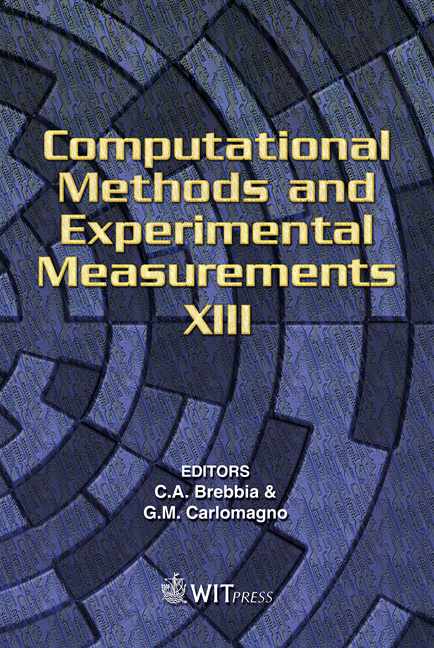Experimental Evaluation Of Dynamic Properties Of An Incrementally Prestressed Concrete Girder Railway Bridge
Price
Free (open access)
Transaction
Volume
46
Pages
8
Published
2007
Size
563 kb
Paper DOI
10.2495/CMEM070691
Copyright
WIT Press
Author(s)
S. I. Kim, I. H. Yeo, N. S. Kim, J. W. Kwark & J. S. Lee
Abstract
The estimation of exact dynamic behavior is very important in railway bridges which can undergo resonance state from repetitive moving axle forces with uniform intervals. The dynamic interaction between bridge superstructures and passing trains is one of the critical issues concerning newly developed bridges designed with more flexibility. Therefore, it is very important to evaluate the modal parameters of PSC girders that have been newly designed before doing dynamic analyses. In this paper, a full scale incrementally prestressed concrete girder of 25 meters long as a test specimen was fabricated and modal testing on it at every prestressing stage was carried out to evaluate the modal parameters, including the natural frequency and the modal damping ratio. Young’s modulus was also obtained from global stiffness of the test specimen. During the modal testing, a digitally controlled vibration exciter as well as an impact hammer is applied, in order to obtain precise frequency response functions, and the modal parameters were evaluated with various construction stages. Keywords: railway bridge, modal test, dynamic performance estimation, moving train analysis. 1 Introduction Repetitive moving forces with uniform intervals induced from a passing train can cause some undesirable behavior of railway bridges. The resonance of a structure can be broken out when the natural frequency of the bridge coincides with the
Keywords
railway bridge, modal test, dynamic performance estimation, moving train analysis.





